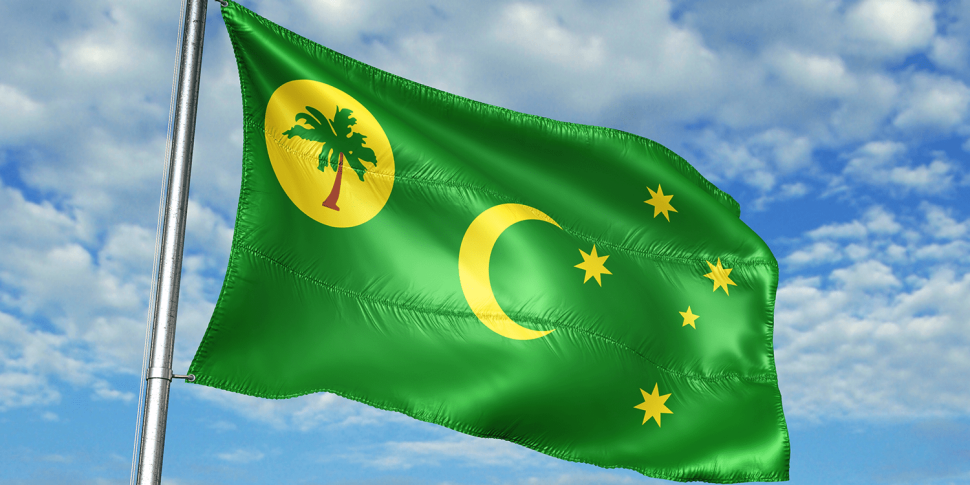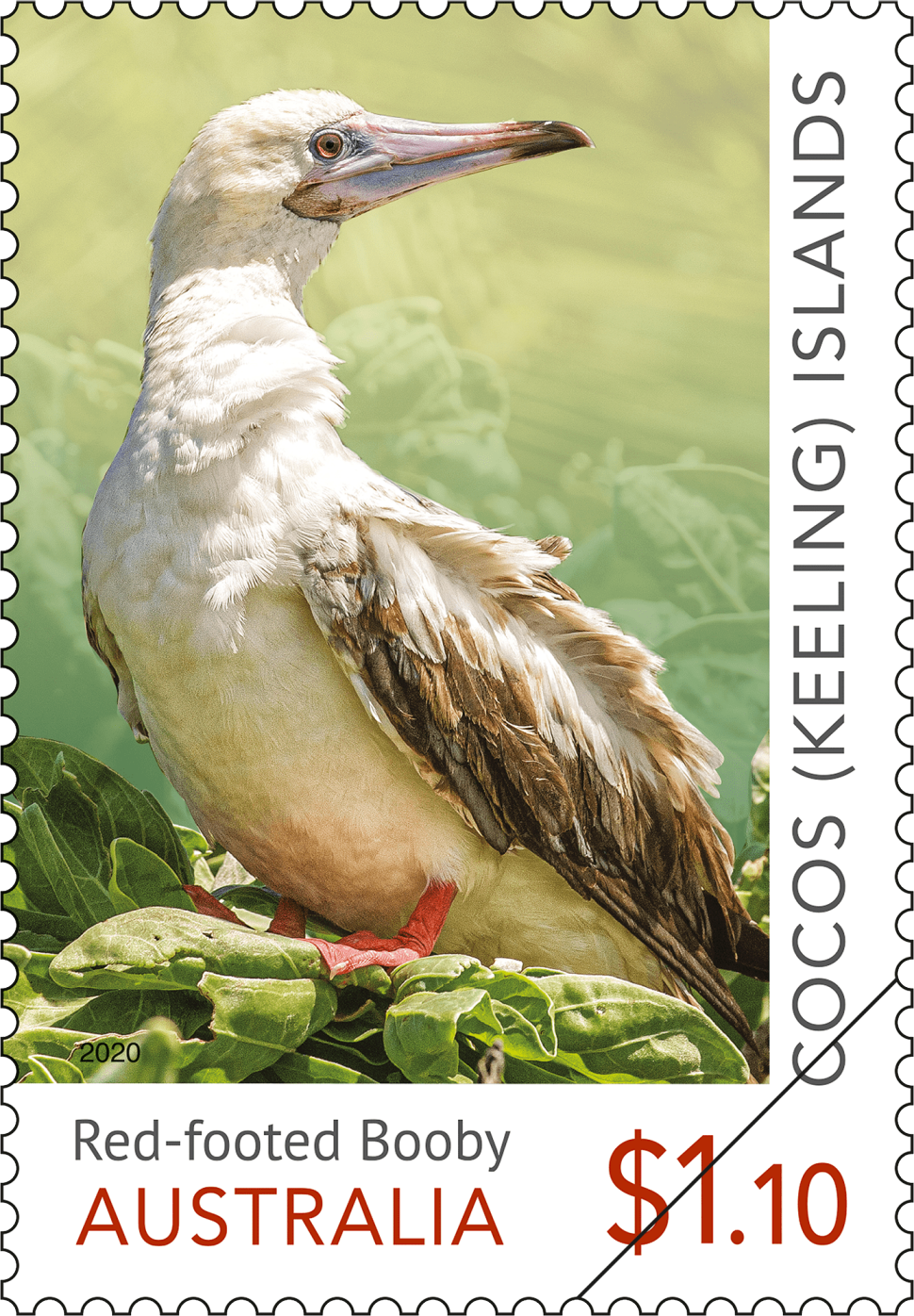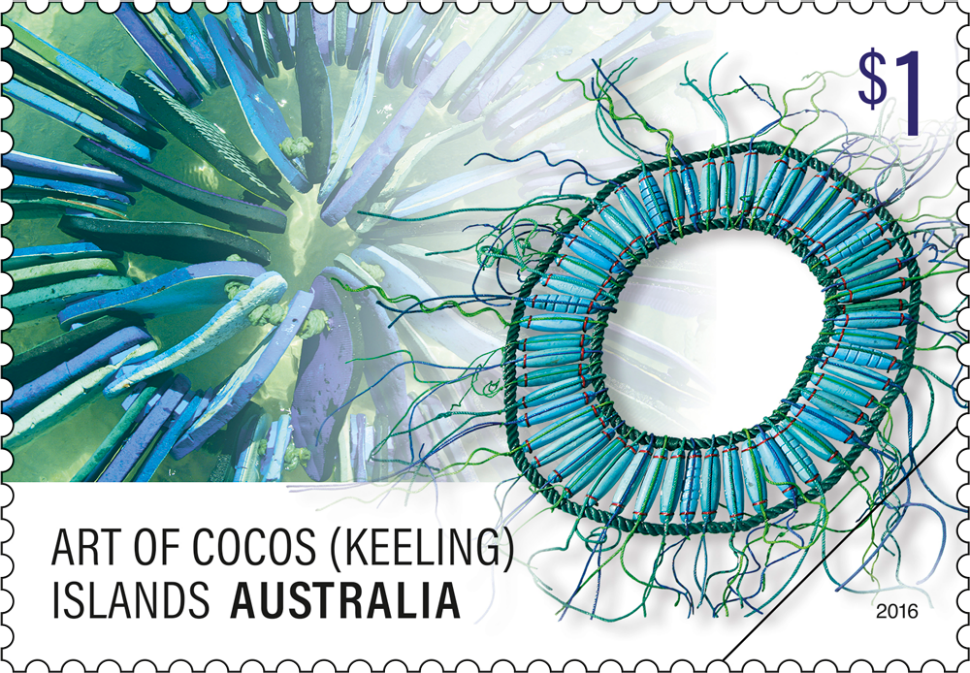The Cocos (Keeling) Islands comprises 27 islands in two atoll groups, with a total land area of about 14 square kilometres. North Keeling Island is a horseshoe-shaped single-island atoll; the other 26 islands form the southern atoll, with only Home and West Islands being populated.
Pulu Keeling National Park, Australia’s smallest national park at 1.2 square kilometres of land plus a 1.5-kilometre fringe of marine environment, is on North Keeling Island, about 24 kilometres north of the main group. Due to its remoteness it has few predators, making it safe for resident breeding, vagrant and migratory birds. There are a great number of birds on this island.
From the interwar period, Cocos-Malays would visit North Keeling to collect coconuts and hunt seabirds. Birds were taken in increasing number after the death of Sidney Clunies-Ross in 1944, who had implemented restrictions on access to the island. Birds were hunted more intensively in the late 1970s and early 1980s. A study into the effects of hunting led to an agreement between the Cocos-Malay people and the Australian government, in 1986, to cease seabird hunting on North Keeling Island. The island was declared a national park in 1995, in recognition of the need to conserve the atoll’s significant flora and fauna.
Approximately 60 bird species have been observed on the Cocos (Keeling) Islands, 24 on North Keeling over the last couple of decades. There are 39 resident breeding species (15 on North Keeling), with only the subspecies Buff-banded Rail being endemic. There are several migratory species for which the island is a stop on their long-distant flights, and vagrant birds are irregularly observed; the island is one of the few pristine tropical islands in the Indian Ocean. The national park’s Ramsar-listed wetland is an important a resting and refuelling location for birds. All species on North Keeling are protected by Australia’s Environment Protection and Biodiversity Conservation Act and many through joint legislations with Japan and China, and the Bonn Convention.
This stamp issue has been developed with the World Wide Fund for Nature, with ornithologist NW Longmore our consulting expert. The stamps depict four vagrant bird species: two seabirds and two waders, occasional, perhaps even accidental, visitors to the Cocos (Keeling) Islands.
Illustrator
The Visiting Birds stamp issue is the first that Owen Bell has illustrated for Australia Post.
Products released in this issue
- Stamp (4 x 70c)
- Cover (blank)
- First day cover (gummed)
- Gutter (10 x 70c) Petrel
- Gutter (10 x 70c) Pratincole
- Gutter (10 x 70c) Albatross
- Gutter (10 x 70c) Curlew
Technical specifications
- Issue date
- 24 March 2015
- Issue withdrawal date
- 30 September 2015
- Denominations
- 4 x 70c
- Stamp design
- Owen Bell
- Product design
- John White, Australia Post Design Studio
- Illustrator
- Owen Bell
- Printer
- RA Printing
- Paper - gummed
- Tullis Russell
- Printing process
- Lithography
- Stamp size
- 35mm x 35mm
- Perforations
- 14.28 x 14.25
- Sheet layout
- Module of 50
- FDI postmark
- Cocos (Keeling) Islands, WA 6799
- FDI withdrawal date
- 22 April 2015
At 30–34 centimetres, the Herald Petrel (Pterodroma heraldica) is a small subtropical gadfly petrel. It was listed as critically endangered in the Environment Protection and Biodiversity Conservation Act in 2002. The plumage of this bird ranges from a dark dusky brown through most parts to mid-grey brown upper parts, with pale lower parts. It has distinctive underwing patterning, with white tips on its primary feathers, and white freckling on its forehead and grey-brown freckling on its breast. This graceful seabird swoops and banks close to the water’s surface to scoop up its food.
The first recorded sighting of the Herald Petrel off mainland Australia was in 1959, in the north-east around Great Barrier Reef. It breeds on islands in few locations worldwide, and while no recent sightings have been confirmed at Cocos (Keeling), it is thought a small number are vagrant (possibly breeding there).
Around 23 centimetres in length, the Oriental Pratincole (Glareola maldivarum) is mainly a dusky olive-brown, lighter around its head and breast and darkening through its body towards its tail. The distinctive dark-brown chinstrap loops low from eye to eye, encircling a pale chin area. It has a short wide bill with red at the gape, long pointed wings, deeply forked tail and a combed middle claw on each foot, all of which help it catch insects aerially. Its tripping gait also helps it catch bugs swarming at ground level.
The Oriental Pratincole migrates from Asia, where it breeds, to Australia during October–November, mainly occupying territory in the northern and western areas of Australia. Travelling in both large and small groups, this restive bird rarely stays in one location for long. It is seen with some regularity on the Cocos (Keeling) Islands.
The Little Curlew (Numenius minutus) is about 30–35 centimetres in length and stands more erect than the larger members of the curlew family. This wader has mottled dark-brown and buff upper parts, buff underparts, a dark crown, and dark, strongly barred rump and tail. Its long, gently downward-curving beak, skinny neck and large, dark eyes give it a curious, affable look.
It breeds in central and north-eastern Siberia and migrates south to summer in sub-coastal Australia and Indonesia. While it has been recorded on Cocos (Keeling), it has not been seen there in recent years.
As its name suggests, the Indian Yellow-nosed Albatross (Thalassarche carteri) has a distinctive yellow stripe running the length of its beak. Its white head, neck and underparts give way to a glossy brown-black back and upper wings. At 80 centimetres in length and with a wingspan of around two metres, this seabird is small in comparison to other albatross species.
The Indian Yellow-nosed Albatross generally summers on islands at the northern fringe of sub-Antarctica, where it breeds. In Australian waters, it occupies temperate and subtropical areas of the southern half of the country. Only one observation of this bird has been recorded in Cocos (Keeling). This species is listed as endangered by the International Union for the Conservation of Nature.
This content was produced at the time of the stamp issue release date and will not be updated.


-islands-visiting-birds/2015-03-24_Cocos-(Keeling)-Islands-Visiting-Birds_01_Herald-Petrel_70c.png.auspostimage.970*0.medium.png)
-islands-visiting-birds/2015-03-24_Cocos-(Keeling)-Islands-Visiting-Birds_02_Oriental-Pratincole_70c.png.auspostimage.970*0.medium.png)
-islands-visiting-birds/2015-03-24_Cocos-(Keeling)-Islands-Visiting-Birds_03_Little-Curlew_70c.png.auspostimage.970*0.medium.png)
-islands-visiting-birds/2015-03-24_Cocos-(Keeling)-Islands-Visiting-Birds_04_Indian-Yellow-nosed-Albatross_70c.png.auspostimage.970*0.medium.png)

/2015-08-25_Islands_of_Cocos_(Keeling)_01_Pulu-Klapa-Satu_70c.png.auspostimage.970*0.11.medium.png)

